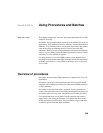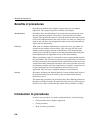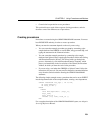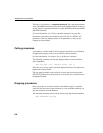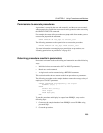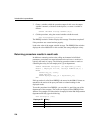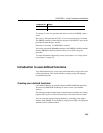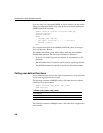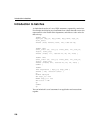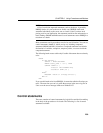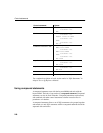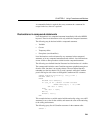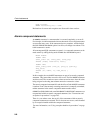
CHAPTER 6 Using Procedures and Batches
235
To execute a CALL of a procedure that returns a result set, DBISQL opens a
cursor.
The cursor is left open after the CALL in case a second result set is returned.
The DBISQL statistics window displays the plan of the SELECT query in the
procedure and then displays the line:
Procedure is executing. Use RESUME to continue.
You need to execute the
RESUME statement or the DBISQL CLEAR command
from the DBISQL Command window before you can alter or drop the
procedure.
For more information about using cursors in procedures, see “Using cursors
in procedures” on page 251
Introduction to user-defined functions
User-defined functions are a class of procedures that return a single value to the
calling environment. This section introduces creating, using, and dropping
user-defined functions.
Creating user-defined functions
User-defined functions are created using the CREATE FUNCTION statement.
You must have RESOURCE authority in order to create a user-defined
function.
The following simple example creates a function that concatenates two strings,
together with a space, to form a full name from a first name and a last name.
You can create the example function
fullname by connecting to the sample
database from DBISQL as user ID DBA, using password SQL, and typing the
statement in the command window.
243 72995.000
247 48023.690
Employee ID Salary





